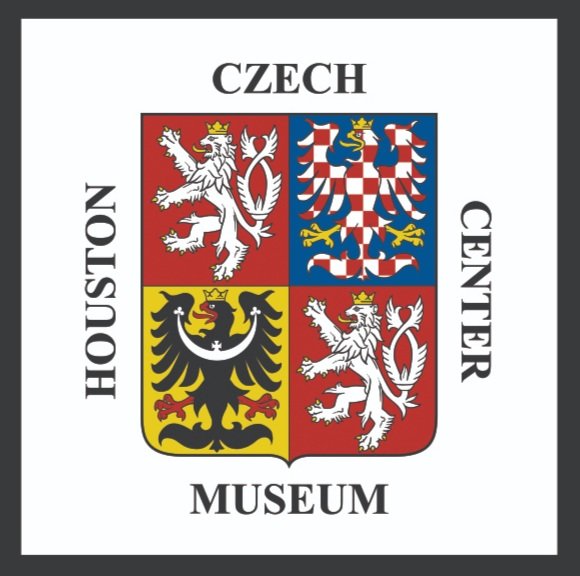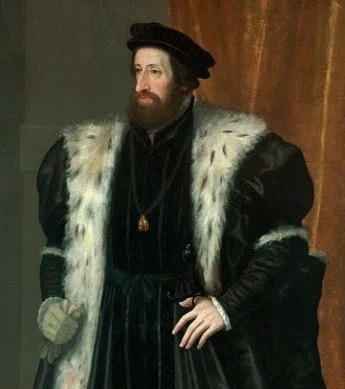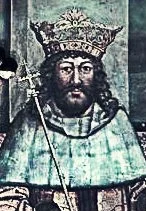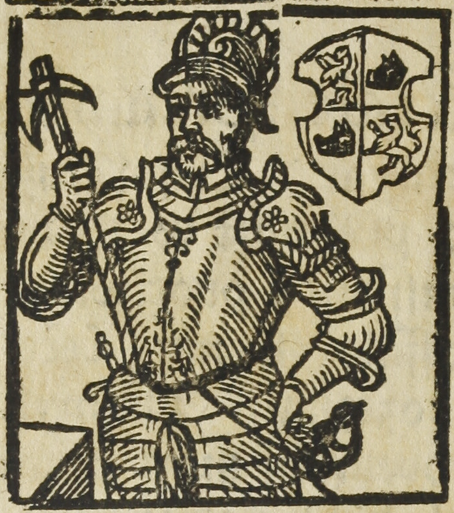On August 29, 1526, the King of Bohemia Louie II died. Both his and the Hungarian armies were decimated by the invading Ottomans, and during the retreat he drowned. Now the Lands of the Bohemian Crown (colloquially called “the Crown Lands”) were left without a king, but not for long. Louie II’s brother-in-law, married to his Jagiellonian wife, Anna, was Ferdinand, a member of the Habsburg dynasty. The Jagiellonians were a royal family of Bohemia, which curried Ferdinand some favor to be elected as the next King of Bohemia. What Louie II left to King of Bohemia Ferdinand I was religious strife between the Catholics and Protestants, the encroaching Ottoman Empire, and the struggles among different groups in the Bohemian diet.
The Bohemian diet was a formal assembly of the major political powers of the Crown Lands, the various lands which the King of Bohemia ruled over. It is made up of three estates, those being the lords, knights, and free towns, which are towns that have more political autonomy compared to others.
The crown is separate from the diet and is usually at odds with them, particularly with the lords and knights. During the rule of Vladislav II, Louis’s father, the free towns had very little power, and the crown’s power also waned due to the Vladislav Land Ordinance. Despite also losing power to the lords, Vladislav II supported their efforts to suppress the free towns as said towns protested their treatment. If not for the death of Vladislav II, the towns and the lords would’ve gone to war with one another.
The estates were not the only ones at odds with one another. Before, during, and after Ferdinand I’s rule, the matter of religious faith remained contentious. When the Protestant Reformation came to central Europe, it broke ground in the Crown Lands. The Utraquists, the main Protestant group of Bohemia, thought they were alone but soon found themselves in good company among the Calvinists and Lutherans. As for where Ferdinand I found himself, it was among the Catholics.
As the King of Bohemia and the Crown Lands, Ferdinand I had many reasons to perform well in his capacity or he would be crushed by the forces which opposed him. Being a crafty king, he found ways to increase his own power and influence.
Two years after Ferdinand I became king, in 1528, he made his first effort to increase his power, seizing control of the Jachymov mines, where coins, including silver coins, were mined. Controlling sources of money would allow the king to dictate who acquires it. Another measure of control was banning meetings between the Bohemian dietines or free towns without royal permission, and splitting the administration of Prague apart. Previously, the diets would meet with one another and discuss various matters related to the Crown Lands, and they could do so without the permission of royalty, which likely allowed them to make decisions in secret or with an advantage in mind, and they likely did with the Vladislav Land Ordinance.
Zdenek Lev of Rozmital depicted with his family’s crest
Ferdinand I would soon make a series of decisions that would increase his influence and the crown’s authority while decreasing the estates’. Zdenek Lev of Rozmital, titled Burgrave of Karlstein, Supreme Judge of the Kingdom of Bohemia, and eventually Supreme Burgrave, was a noble among nobles in Bohemia. During Louis II’s reign, he, along with other nobles, would lead Bohemia when the king was young and far from the kingdom. Though he could’ve been selected to be the next king, he was too old for such a duty, so he rallied behind Ferdinand for his election to the kingdom.
This did not stop Ferdinand I from dismissing Zdenek, the greatest magnate of the Jagiellonian era, four years into his rule. The King of Bohemia worked discreetly, starting with the creation of offices right below the monarch in Vienna. The Court Chamber, the financial office of Vienna, directed the Bohemian Court Chamber in Prague and the Silesian Court Chamber in Breslau. Ferdinand I made sure that positions in the offices were offered primarily to nobles and elites in the diet, which increased the pro-Habsburg sentiment among the dietines. Thus, Zdenek’s influence shrank significantly.
Although the king would delicately weave policies to his benefit, there were times he moved with force against those who opposed him.
Charles V’s victory over the Schmalkaldic League artistically represented
A war broke out between the Lutheran princes of the Schmalkaldic League and Charles V in 1546. Ferdinand I requested the Bohemian diet support Charles V, Holy Roman Emperor and Ferdinand I’s older brother. They complied but only to a point, as they refused the Holy Roman Emperor any armed resistance, especially after Moravia and Silesia refused. Even without the extra support, Charles V won the war, thus the dietines earned Ferdinand I’s ire. He knew there were radicals among the noblemen, so he confiscated their estates and imprisoned some. He also punished the royal towns’ people, executing two knights and two burghers, people subject to town laws, in Hradcany Square. At this point, royal towns had no power, no money, no autonomy, no arms, and no more freedom, replaced with the crown’s direct control, concentrating influence within the crown and the nobles and knights of the diet. Some may wonder why the royal towns were getting the brunt of Ferdinand I’s wrath, but the answer probably lies in how much power and influence the nobles still had.
As a hardcore Catholic, Ferdinand I worked to undermine the Lutherans and Neo-Ultaquists, a group split from the Ultaquists, along with the Old Ultaquist, who adhered more to Catholicism. For example, he invited the Society of Jesus, a Jesuit group, into Prague and gave them the Clementinum, a religious building, in the Old Town in 1556. These Jesuits were adored by the children of nobles and wealthy burghers, breathing new life into Bohemian Catholicism. Ironically, a year prior, 1555, he signed the Peace of Augsburg in his capacity as the King of Hungary, bringing religious cohesion, though not exactly unity, to Germany. In 1561, he restored the archbishopric and removed the Hussite church from the diet’s control. However, there was a small turn in fairness towards the Neo-Ultaquists, where he gained both them and the Old Ultaquists papal confirmation of communion. The Old Ultaquists were satisfied, but the Neo-Ultaquists were not.
Bohemia was not the only place Ferdinand I wielded power and influence. In Germany, for example, Charles V’s son, Philip, Ferdinand’s nephew, was meant to succeed his father. However Ferdinand I convinced the Holy Roman Emperor to make his own son, Maximilian II, the successor. Although this arrangement could be seen as unjust by Philip, Ferdinand I still gave him something to work with. In 1558, the Habsburg domain was separated between Austrian and Spanish parts, with the Spanish parts going to Phillip, where he went on to become Philip II, King of Spain and Portugal.
During his lifetime as the king, Ferdinand I had 15 children with Anna, only two of which died very early in their lives. He had three sons and ten daughters. His sons were the aforementioned Maximilian, Ferdinand, and Charles. Many of his daughters went on to get married to royalty across Europe, while Magdalena, Helene, and Margarete took vows of celibacy, founding a convent in Hall along with their brother Ferdinand of Tyrol. After Anna died, Ferdinand I never remarried before his own death in 1564, being succeeded by Maximilian II, the next King of Bohemia and Holy Roman Emperor.
Written by Emanuel Linton
Palmitessa, James. “Bohemia and Bohemian Crown Lands.” Oxford Bibliographies, Oxford University Press, 27 June 2022, www.oxfordbibliographies.com/display/document/obo-9780195399301/obo-9780195399301-0147.xml.
Agnew, Hugh LeCaine. “Bohemia and Bohemian Crown Lands.” Renaissance and Reformation, 26 Aug. 2011, pp. 55–67.
“Ferdinand I.” Encyclopædia Britannica, Encyclopædia Britannica, inc., 14 June 2024, www.britannica.com/biography/Ferdinand-I-Holy-Roman-emperor.
Seton-Watson, R. W. A History of the Czechs and Slovaks. Hutchinson & Co, 1943. pp. 87-93
“Leo of Rozmital.” Biographies.Net, STANDS4 LLC, 2025, 23 June 2013, www.biographies.net/people/en/leo_of_rozmital.
Koenigsberger, Helmut Georg. “Philip II.” Encyclopædia Britannica, Encyclopædia Britannica, inc., 26 Mar. 2025, www.britannica.com/biography/Philip-II-king-of-Spain-and-Portugal.
Mutschlechner, Martin. “Ferdinand I: Marriage and Offspring.” Die Welt Der Habsburger, Schönbrunn Group, www.habsburger.net/en/chapter/ferdinand-i-marriage-and-offspring. Accessed 16 May 2025.






